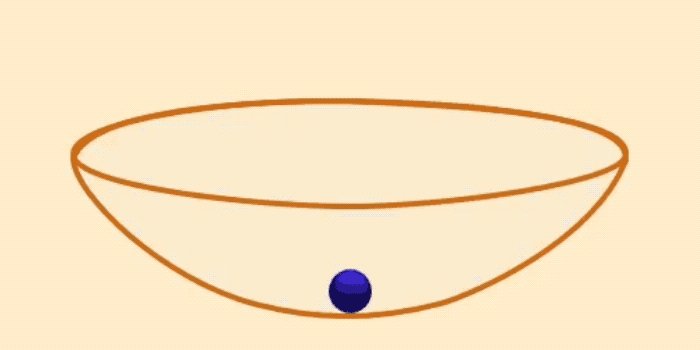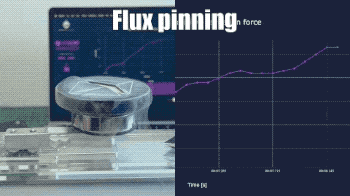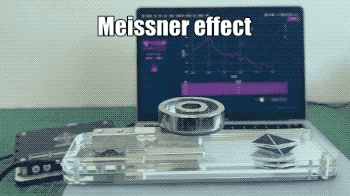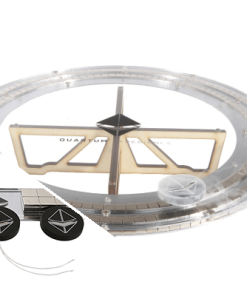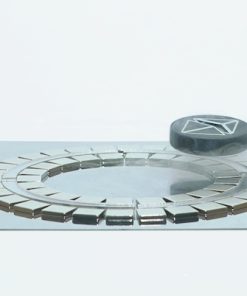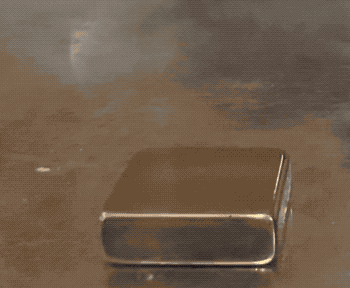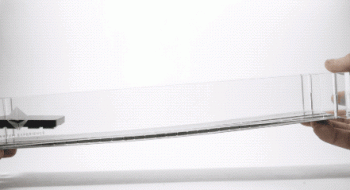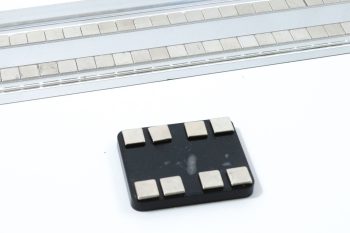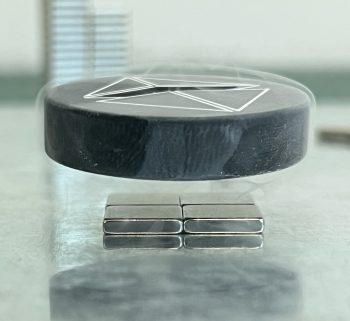Ever wondered how Quantum levitation is possible? It’s all due to superconducting materials! These materials have special properties that allow them to conduct electricity without any resistance. When a magnet is placed near a superconducting material, the superconductor does two things at the same time – expel some of the magnetic field from its body (Meissner effect) and pin some of the field inside (flux pinning). This creates two effects:
Magnetic repulsion – the superconductor “becomes” an opposite magnet and feels a repulsion force.
Quantum Locking – locking of the superconductor in the surrounding magnetic field, preventing the pinned magnetic flux lines from moving inside the material.
How Does Superconducting Levitation or Quantum Levitation Work?
Superconducting levitation requires two conditions to be met in order for it to happen. First, the material itself must be cooled to temperatures well below room temperatures (around -163°C / -261°F). This is because all the superconductors we know of today, become superconductive only at low temperatures. Second, a powerful magnet must be placed near the superconductor. Initially, this causes electron pairs (Cooper pairs) within the material to start moving, and produce a magnetic field opposite to the external field, and as a result create magnetic repulsion. This is called the Meissner effect.

If the magnetic field is strong enough and the superconductor is of the right type (called Type II), the field will overcome the Meissner expulsion and penetrate the body of the superconductor. The magnetic field will enter the body in the form of discrete magnetic tubes or fluxons. The fluxons may get stuck in pinning centers – areas where superconductivity is relatively weaker, such as defects, grain boundaries, etc. This effect is called Flux Pinning. Any movement of the fluxons outside the pinning centers will cause the energy of the system to increase and will thus be followed by a force the tries to negate it. This is similar to a ball at the bottom of a bowl where any movement of the ball will increase its potential energy and will thus be encountered with a returning force towards the center.

When the flux is pinned inside the material it locks the superconductor in place and we get the 3D locking effect. The superconductor can be frozen mid-air in any orientation and even be suspended below the magnet. We can distinguish between the Meissner repulsion and flux pinning with an easy-to-do experiment:
What determines the strength of the locking?
Superconducting Critical Current – Superconductors have one “card” in its sleeve – the ability to transfer currents without resistance. These supercurrents produce a magnetic field that interacts with the external field and are the source of the levitation and suspension forces.
The maximal levitation force depends strongly on the maximal internal current a superconductor can transfer or critical current, Ic . A typical value of Ic in modern high-Tc superconductors is ~500A for a 1cm wide tape at liquid nitrogen temperatures (77K). The higher the critical current the stronger the levitation force.
External magnetic Field strength & gradient – Another parameter that affects the levitation force is the strength of the external magnetic field and its spatial gradient. The levitation forces stem from the energy changes when fluxons move inside the superconductor and in/out of pinning centers. The stronger the magnetic field the more fluxons are and the overall force needed to move them. Also, if the external field changes rapidly in space, having a strong spatial gradient, the fluxons will try to move when the superconductor is moved which will require a stronger force.
-
Mini Maglev Kit$1,399.00 – $2,099.00
-
Economy superconductivity Levitation Kit$109.00 – $309.00
-
DIY Maglev Kit$499.00 – $749.00
